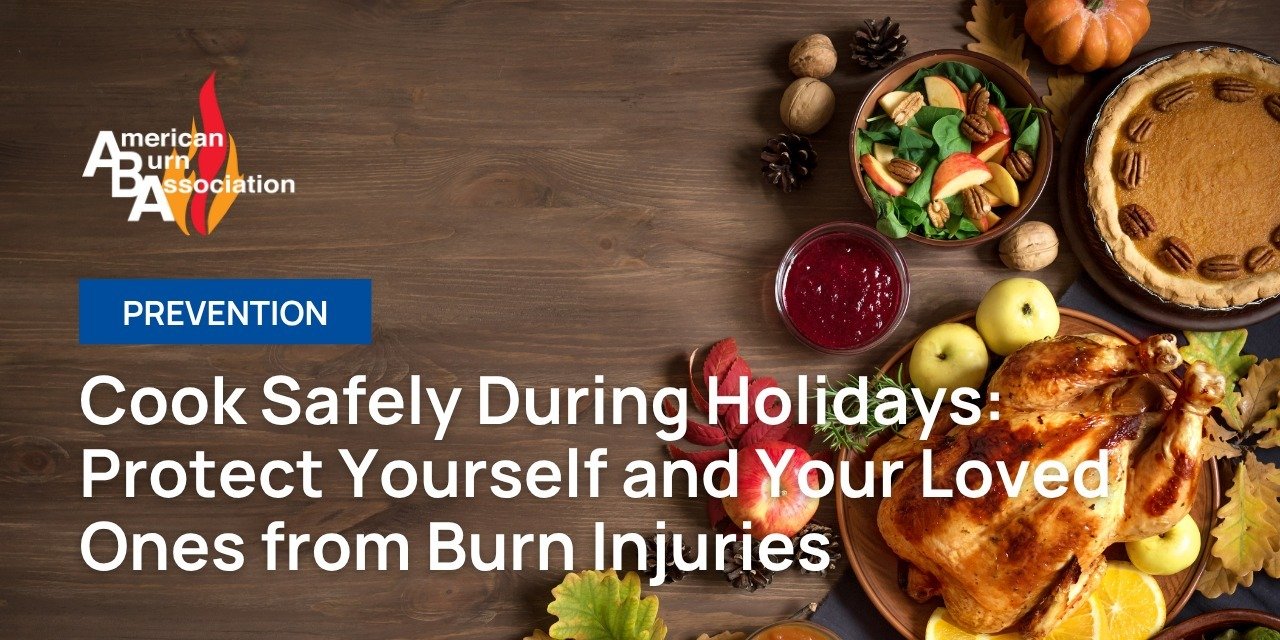CHICAGO [Nov. 20, 2025] — The holiday season is a time for family, gratitude, and delicious meals, but it also sees a rise in cooking-related burn injuries. The American Burn Association (ABA) urges everyone to prioritize kitchen safety to prevent accidents and ensure a joyful celebration.
"Preparing and sharing meals with family and friends is a cherished tradition, but Thanksgiving is one of the busiest times in the kitchen, and that increases the risk of burn injuries, particularly from hot oil and frying," said Clifford Sheckter, MD, MS, Chair of ABA’s Burn Prevention Committee. "Taking a few simple precautions can help ensure a safe and enjoyable holiday for everyone."
Cooking-related burns remain among the most common types of household injuries, with frying accidents leading the charge. An abstract published in the *Journal of Burn Care & Research found that french fries and fried chicken accounted for over half of all cooking-related burn injuries requiring hospital admission. Severe injuries, particularly from frying turkeys, are also common during this time of year.
Key Findings:
- Turkey preparation caused some of the most severe burns, with an average TBSA (total body surface area) burn size of 23%.
- Hot grease and oil remain the leading causes of cooking-related injuries.
- Over 80% of burns caused by frying french fries and fried chicken required surgical intervention.
Safety Tips to Protect Yourself and Your Family:
- Stay in the kitchen: Whenever the oven is on or the stove is in use, someone should always be present. Unattended cooking is a leading cause of burn injuries.
- Plan ahead: Establish a 3-foot “kid- and pet-free safe zone” in the kitchen. Turn pot handles inward to prevent spills and burns.
- Use a timer: Avoid overcooking, forgetting what’s on the stove and leaving food unattended while cooking.
- Fry responsibly: If deep-frying a turkey, do so outdoors on a stable, non-flammable surface.
- Be grease-smart: Always monitor oil temperatures and never overfill the fryer.
- No water on grease fires: Keep a lid or baking soda nearby to smother small grease fires, never use water on grease fires.
Additional guidance includes: cooking when alert, cleaning cooking surfaces, wearing short- or fitted-sleeve tops, using back burners, checking food often, and ensuring all appliances are off after cooking.
"Raising awareness and understanding about burn risks is essential to prevention," said Sheckter. "With a few straightforward precautions, everyone can stay safe and enjoy the holiday with peace of mind."
Enhanced Resources on ABA’s Website
- Safe Cooking and Burn First Aid Resources: Downloadable PDFs with everyday prevention tips, microwave safety, frying precautions, and first aid instructions.
- Find a Burn Center Tool: Locate burn centers nationwide to ensure expert care if an injury occurs.
These resources enable the public, healthcare providers, and the media to understand the scope of burn injuries and access practical guidance on prevention and treatment.
*Citation:T A Burton, A Savetamal, Dangerous Foods: Etiology of Cooking-Related Burn Injuries Requiring Admission to a Burn Unit, Journal of Burn Care & Research, Volume 40, Issue Supplement_1, April 2019, Page S195, https://doi.org/10.1093/jbcr/irz013.341.
Editor’s Note
For more information about ABA, or to request an interview with Clifford Sheckter, contact Susan Urbanczyk at urbanczyk@ameriburn.org.
About the American Burn Association
The American Burn Association (ABA) is dedicated to improving the lives of those affected by burn injuries through advocacy, education, research, and prevention. Founded in 1967, ABA supports burn care professionals and advances the quality of burn care worldwide. For more information, visit ameriburn.org.


